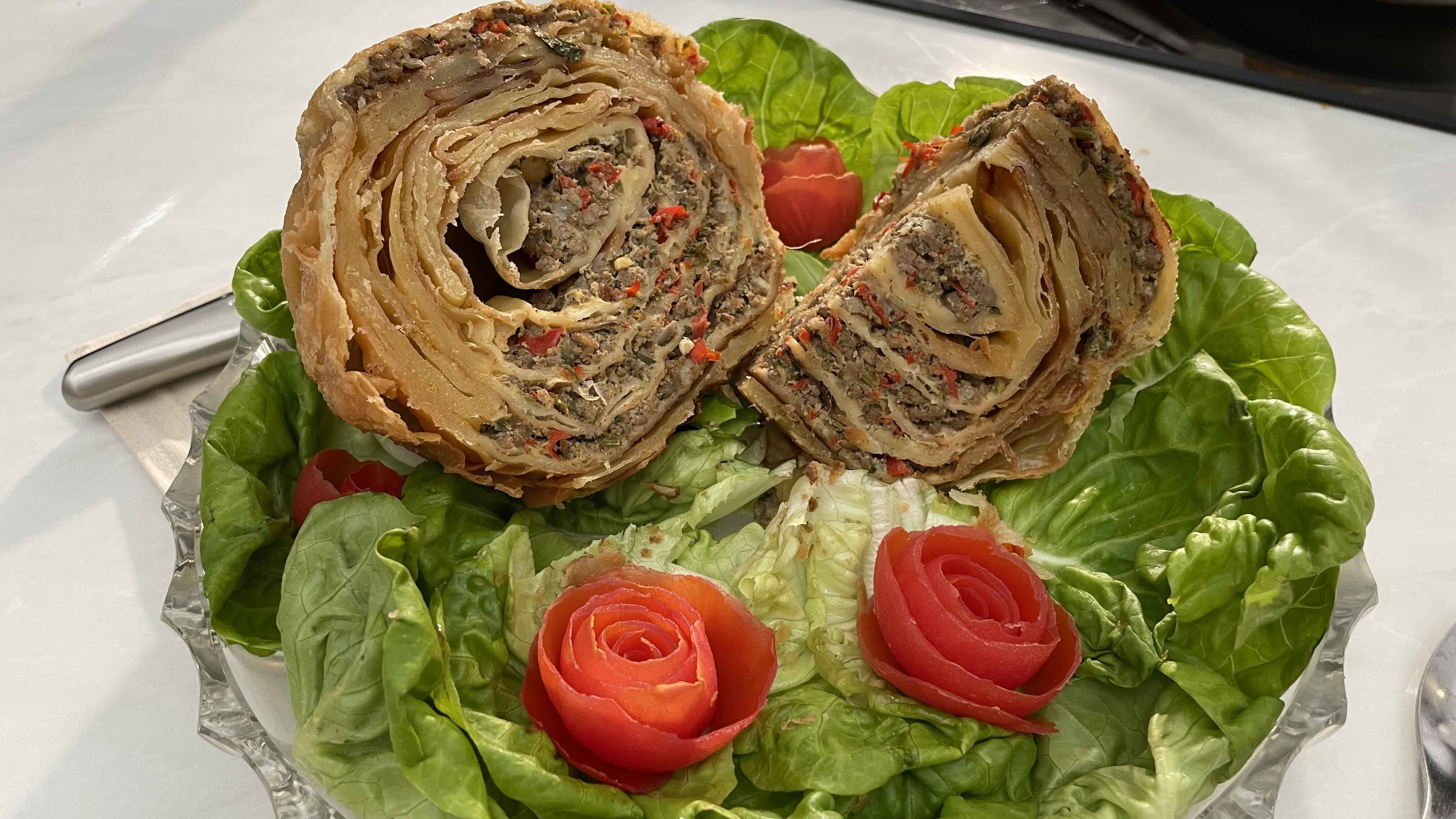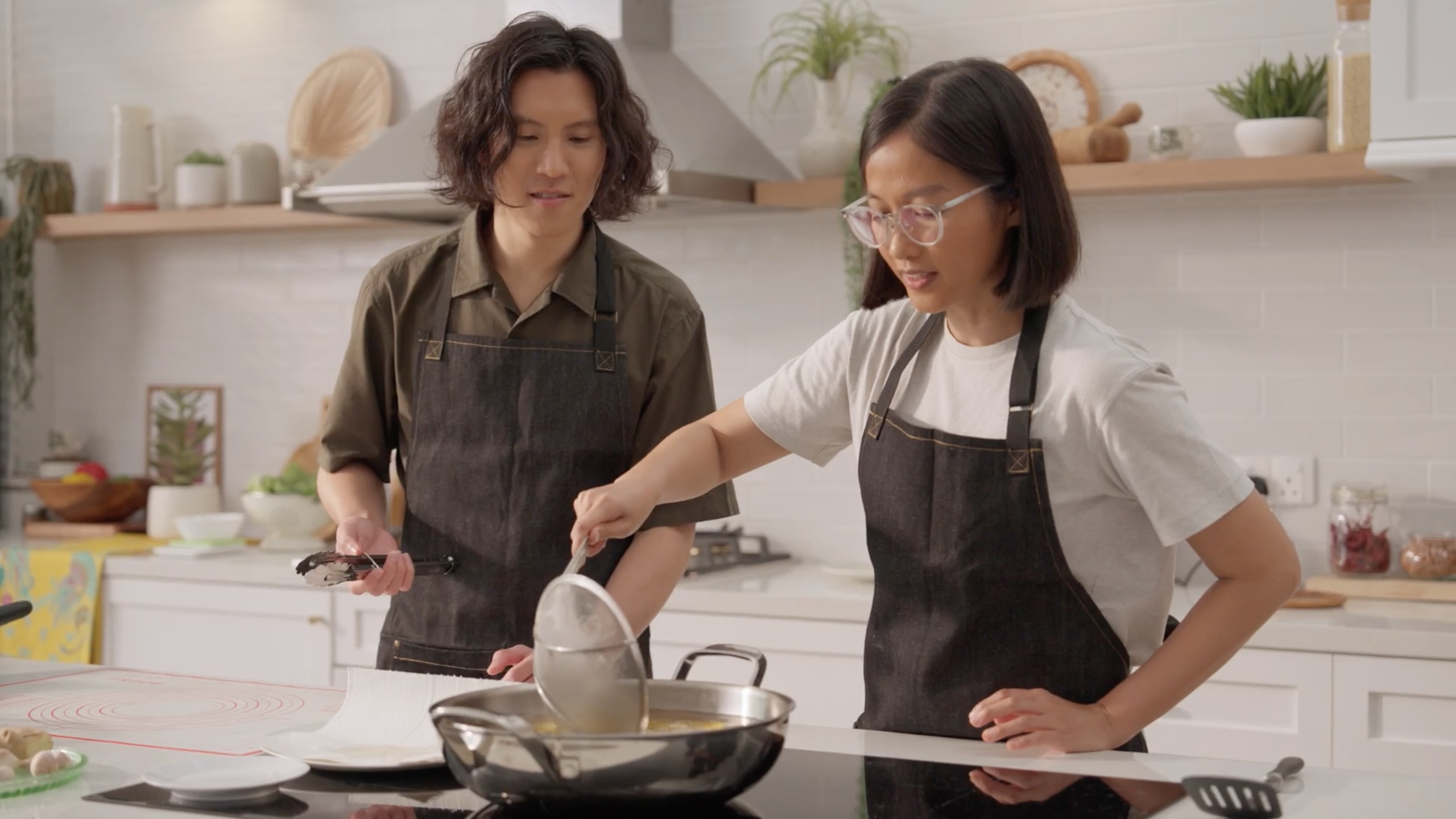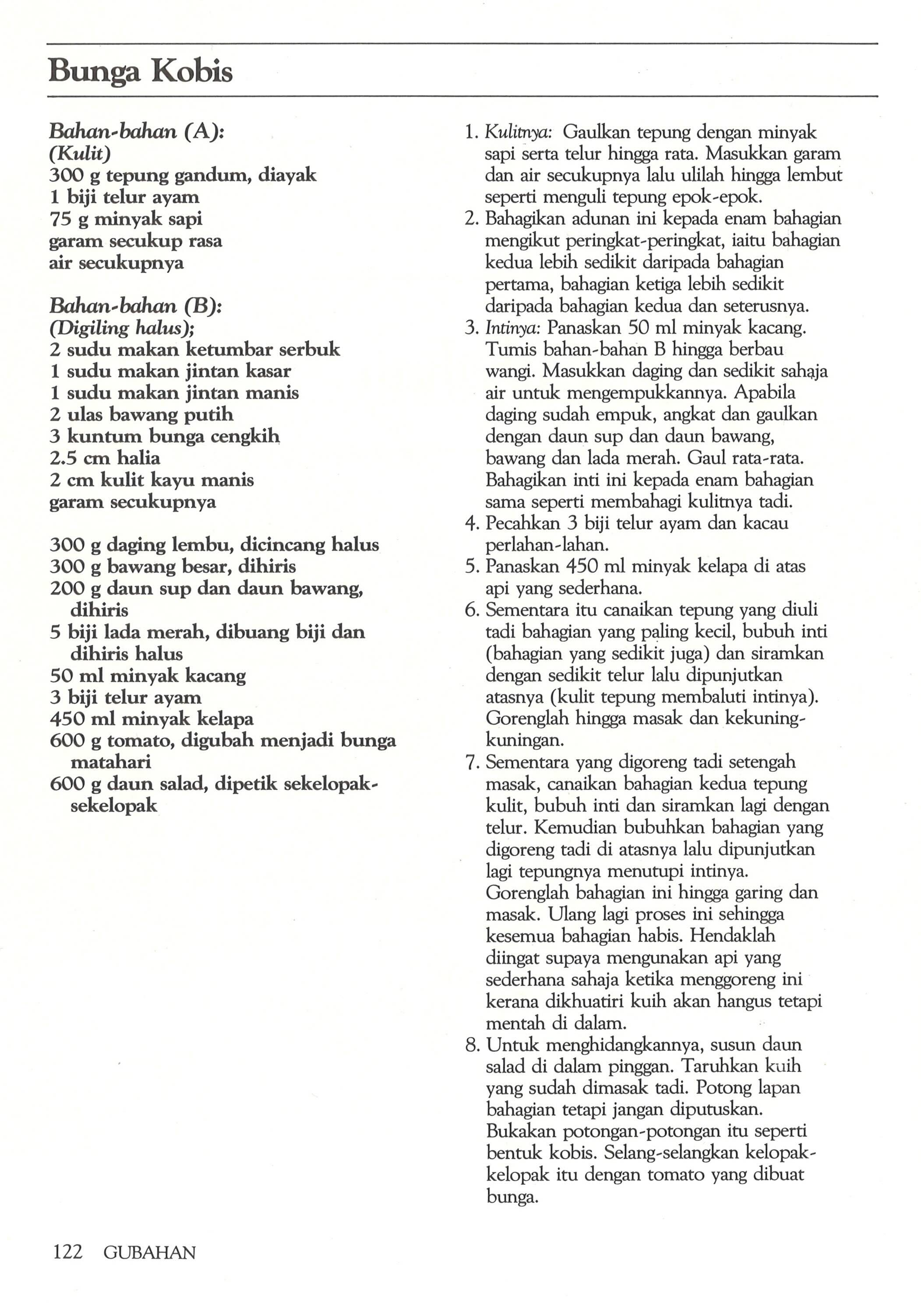Peeling Back the Layers of Bunga Kobis
Bunga kobis was a dish prepared only for special occasions because of how laborious it was to make. In this episode, librarian Toffa Abdul Wahed tells us more in her attempt to put together this many-layered pastry.
Episode summary
Bunga kobis, or “cabbage flower” in Malay, isn’t made of flowers or cabbages. So how did it get its name? Join librarian and food researcher Toffa Abdul Wahed as she tackles this recipe from a 1986 cookbook by Hajjah Asfiah Haji Abdullah, Hidangan Warisan Kita (Our Heritage Dishes), and explains how it used to be a highlight at Malay weddings in Singapore a few decades ago. Today, this dish is no longer seen at special occasions.


Recipes
Making bunga kobis is painstaking work and extremely challenging because of the number of layers it involves. Hajjah Asfiah’s recipe calls for six layers, each fried and nested within the next layer.
This recipe is taken from her cookbook’s final chapter about gubahan. Gubahan is the Malay term for “arrangement” or “composition”. It can be used to refer to, for instance, an arrangement of flowers or a musical composition. Hajjah Asfiah used it to refer to elaborately prepared dishes made for special occasions like engagements and weddings.
Toffa stayed largely faithful to Hajjah Asfiah’s recipe, although she used groundnut oil instead of coconut oil for frying the pastry. She also used smaller quantities of coriander, Chinese celery, spring onion and chillies.

Bunga kobis
For the dough skin:
300 g wheat flour, sieved
1 egg
75 g ghee
salt to taste (1 g or 1/2 tsp.)
water (100 ml)
700 ml groundnut oil
For the rempah:
1 tbsp. ground coriander seeds
1 tbsp. cumin seeds
1 tbsp. fennel seeds
2 cloves garlic
3 cloves
2.5 cm ginger
2 cm cinnamon bark
salt to taste
For the filling:
300 g ground or minced beef
300g or 1 large onion, diced
20 g Chinese celery, chopped
30 g spring onion, chopped
4 red chillies (2 deseeded), sliced
50 ml groundnut oil
3 eggs (kept separate from filling)
For the garnish:
tomatoes, carved into flowers
lettuce (leaves separated)
1. For the skin: Mix the flour, ghee, and egg well. Add salt and water, and knead until soft, like the dough for epok-epok (curry puff).
2. Divide the dough into six portions, with the first being the smallest. Increase the amount of dough for each subsequent portion. [Toffa calculated it as 6 %, 10 %, 14.5 %, 18.5 %, 23.5 % and 27.5 %.]
3. For the filling: Heat 50 ml of groundnut oil. Sauté ingredients for the rempah until fragrant. Add the meat and a little water to tenderise it. Add the onion, and half the Chinese celery, spring onion and chili. Add salt to taste. When the meat is tender, turn off the heat and mix in the rest of the Chinese celery, spring onion and chili. Divide this filling into six portions, like how the dough was portioned.
4. Crack 3 eggs into a beaker and beat slowly. Add a pinch of salt.
5. Heat oil in a wok or pot over medium heat.
6. In the meantime, roll out the smallest portion of dough and place the smallest portion of the filling on the rolled dough. Pour a bit of egg mixture onto the filling. Wrap the filling by folding and pinching the edges of the dough. Fry until cooked and golden brown, and set aside.
7. Work with the second portion of dough and filling. Pour in the egg mixture, then place the first portion that was fried earlier on top of the egg mixture. Wrap and fry until crisp and cooked. Repeat this process until all six portions are done. Remember to fry on medium heat. If the oil is too hot, the dough will burn but the filling inside will remain raw.
8. To serve, arrange lettuce leaves on a plate. Place the bunga kobis in the middle of the plate and cut into 8 pieces/petals, beginning from the same point in the middle (like how you would cut a round cake). Open the petals so the dish looks like a flower. Place the tomato flowers in between the petals.
Related Podcast
Hajah Asfiah: A Guardian for Traditional Malay Culture
A tireless steward of Malay culture, Hajah Asfiah worked all her life to preserve and pass on Malay crafts. When she was just 10, she began teaching embroidery and flower arrangement in school. Later in life, she was a mak andam (wedding attendant) for more than 20 years and worked with more than 1,000 brides. At age 65, she got her cookbook Hidangan Warisan Kita (Our Heritage Dishes; 1986) published by Times Books International; it was the publisher’s first cookbook, written in Malay by a Malay person. The book had recipes for dishes that have since become extinct. Sadly, she died a year later, but thanks to the book she wrote and the many courses she taught, her memory lives on.
Related Articles
Cikgu Asfiah Abdullah: A Cultural Luminary
A former teacher and mak andam fulfils her dream by writing a book on Malay recipes in 1986, the first all-Malay cookbook from Times Books International.
Malay-Muslim Weddings: Keeping Up with the Times
How have Malay-Muslim weddings in Singapore evolved since the 1950s? Asrina Tanuri and Nadya Suradi tell us about these changes large and small.
Related Books
Asfiah Haji Abdullah, Hajjah. Hidangan Warisan Kita (Singapore: Times Books International, 1986). (From National Library, Singapore, via PublicationSG)
Berhah Haji Harun, Che. Gubahan Hantaran. Kuala Lumpur: Utusan Publications, 2001. (From National Library, Singapore, call no. RSING q745.509595 BER)
Haji Mohtar bin Haji Muhammad Dom. Malay Wedding Customs. Kuala Lumpur; Singapore: Federal Publications, 1979. (From National Library, Singapore, RSING 392.5 MOH)
Khir Johari. The Food of Singapore Malays: Gastronomic Travels Through the Archipelago. Singapore: Marshall Cavendish Editions, 2021. (From National Library, Singapore, call no. RSING 394.120899928 KHI-[CUS])

